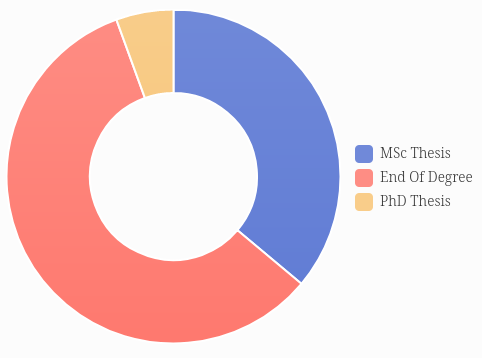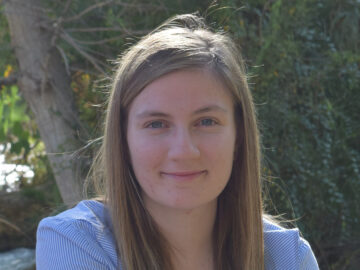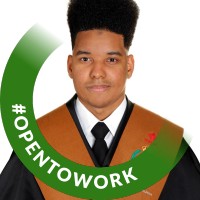Subjects
present
2015
Operating Systems I -English- (T+P)
Degree in Computer Engineering
present
2011
Computer-Human Interaction II (P)
Degree in Computer Engineering
present
2012
Educational Research & Innovation
Master in Teaching Training
2016
2014
Interactive Systems Design (P)
Degree in Computer Engineering
2015
2012
Programming Methodology (P)
Degree in Computer Engineering
2014
2011
Office Automation -English- (T+P)
Higher Engineering in Computer Science
2015
2012
Advanced Distributed Systems: Grid and Ambient Intelligence
Master in Advanced Information Technologies
2014
2006
Programming Tools and Environments (T+P)
Higher Engineering in Computer Science
2013
2006
Programming II (P)
Higher Engineering in Computer Science
2007
2006
Operating System Administration (P)
Higher Engineering in Computer Science
2007
2006
Operating Systems II (P)
Higher Engineering in Computer Science
Supervisor (Selection)
This section shows the academic works (End of Degree and MSc Thesis) that I had the honor of advising. This is one of the activities that I enjoy the most and that allows me to work side by side with fascinating people. I am frankly proud of all the works, although here is only a selection, focusing on those that are closest to my research lines.
Are you interested in working with me?
If you have an idea or are interested in my lines of work, come talk to me and we can plan an academic work.

EoD Work
2020
Monitoring and visualization of habits and behavior through the use of mobile devices

Elena Díaz del Campo González Gallego. Outstanding (9.8)
The impact of Information and Communication Technologies (ICT) on our society brings many advantages that allow us to improve people’s daily lives. Additionally, the use of ICTs in our daily lives serves to characterize our behavior, habits and skills. In this End of Degree Project (TFG) we propose to monitor and characterize actions and events performed on a mobile device, through the development of an application that contains several services provided by Android, with the aim of characterizing the interaction with the device that we perform in our daily lives. The monitored information has been stored in raw and visualized so that both the user and external agents can analyze the habits and behaviors. This application, called BIPapp, is part of a research project that aims to diagnose early mild cognitive impairment by analyzing changes in behavior. The application, in any case, has multiple uses. For example, it could also be used to detect technological addictions or bad habits in the use of new technologies. In this project we have made use of Android’s accessibility services to analyze interactions and events in the system, store the information in remote databases and apply visualization techniques in the form of graphs to show the different aspects of daily life, filtered by time and type. In addition, and in an innovative way, the physical activity performed is also collected (distinguishing between resting, walking or running) so that the use of the mobile phone can be correlated with the activity.
Avanttic Accesit Award 2020
EoD Work
2020
Conversational NAO Robot as ESI’s promotional agent

Fernando Huertas OlivaresHonorific Mention (10)
This Final Degree Project emerges as an aid to these students when it comes to obtaining information about the studies in Computer Engineering that are taught at the University College of Computer Science (ESI) of Ciudad Real. For this, the development of a conversational agent that disseminates this knowledge in an interactive way promoting the School will be carried out. Users can talk with this agent through a robot-shaped avatar, which will answer their questions verbally. The project itself can be used for promotional purposes, since in it, future students will see what a student of the School can develop.
Project Web Site: https://ferhuertas.github.io/NAO/
EoD Work
2020
Video game for the analysis of profiles related to bullying in adolescents

José Manuel Díaz Florian (Remarkable 8)
The main function of the video game will be the classification of the profiles associated with bullying, distinguishing five categories: bully, assistant, victim, defender, and neutral.
This project will use an approach from the player’s point of view, in which, in a first- person game, you will be able to explore different scenarios, interacting with different types of characters, both students and teachers. The participatory player both directly and indirectly in certain events or situations, which determines a test and on which they make decisions, in order to analyze the behavior and background of the player in standard situations. This project aims to use questionnaires validated by professionals whose answers will be obtained directly from the adolescent’s actions during the game in an implicit way.
EoD Work
2019
Segmentation Fault. Serious, interactive and conversational 3D-videogame to know the ESI

Enrique Garrido Pozo (Honorific Mention 10)
This project (TFG) was conceived as a result of need to help the students of the University of Computer Science of Ciudad Real(ESI) when they arrive to the university. It consists in the design and development of a serious videogame on a 3D map of ESI, trying to be as realistic as possible. The purpose of the video game is that the player, typically, a new student of ESI, gets to know the installations, services and staff of the university, within the context and narrative of the video game. The type of video game will be a first-person conversational and interactive adventure in which the student will have to carry out some missions to complete it. The player will be able to interact with teachers, colleagues and staff, as well as certain elements of ESI that he will need throughout his history.
The motivation of this TFG is to have a serious video game in the university, so that new students will be able to get know everything about their new academic life.
Project Web Site: https://www.esi.uclm.es/ESI-SegmentationFault/
EoD Work
2019
eLinc Virtual pet application inspired in token economy for improvement of the behavior

Juan Manuel Caballero Gil (Honorific Mention 10 – Ubotica Award)
This project consists of developing an application for mobile devices that allows to interaction with a virtual pet that enables psychologists or parents, improvements or changes in the user’s behavior, typically a toddler. between 4 and 12 years old.
The application is inspired in the psychological technique of «token economy» for behavioural modification, establishing concrete objectives and associated rewards, both in the context of the game itself (for example, objects or accessories for the pet) as in real life (e.g., an outing to the park). The difference with the traditional method lies in the own the child’s perception of the activity. When we are in a video game we find ourselves in a playful environment and will not be perceived as a task imposed by their parents to to improve their behavior, but as leisure. The development will use the Unity platform and the language C#
EoD Work
2019
Experimental video games to assess human behaviour when interacting with virtual avatars
Ángel Pavón Baeza (Remarkable 8.5)
Game theory has traditionally been used to understand human behavior for decision making. In this end-of-degree (TFG) paper, human behavior is studied when interacting with multimodal virtual avatars.
Several competitive video games of a person are developed against a virtual avatar, Blackjack and Ultimatum game. The interaction with the games is done mainly by voice, using cognitive computing technologies and recreates a 3D virtual environment as close as possible to reality. Specific aspects of human behavior related to the sense of justice and equity are studied, as well as aspects related to trust. Emotional components associated with the interaction during games with avatars are also studied.
MSc 2019
Programming with gamification, role reversal, and video games
David García-Moreno García-Caraballo (Outstanding 9)
MSc 2019
Challenge 555 and development of key competence learn to learn
Helena Ocaña Biedma (Outstanding 9.5)
EoD Work
2018
Sensorized toys to support the assessment of language disorders
Raúl García-Hidalgo Tajuelo (Outstanding 9.5)
Developmental disorders are persistent deficits in social communication and social interaction across multiple contexts, including problems maintaining the normal flow of conversations, difficulty fitting into the social context, or aversion to sharing feelings and emotions, among many other symptoms.
Affective computing aims to develop systems to recognize, process and interpret emotions. This type of support-oriented technology can improve the quality of life of people diagnosed with different disorders related to human interaction.
This project presents a sensorized toy with affective functionalities through cognitive services based on IBM Watson technology, chosen after conducting a technological study. The purpose of this tool is to support therapies with children and preadolescent about the perception of emotions, using automatic speech recognition to interact with the user. To validate the tool, an evaluation experiment was carried out with healthy preadolescent subjects.
Related publication: García-Hidalgo, R.; Johnson, E.; Hervás, R.; González, I.; Mondéjar, T.; Bravo, J. MAmIoTie: An Affective and Sensorized Toy to Support Emotion Perception. Proceedings 2018, 2, 1209. [Best student paper award] https://doi.org/10.3390/proceedings2191209
EoD Work 2018
Indoor mobile location application by radio frequency and personal odometry

Pablo Gómez Ramírez (Outstanding 9.5)
Nowadays, mobile phones have a multitude of sensors: WIFI connection, Bluetooth, GPS / GLONASS, inertial sensor (IMU), etc. Due to these sensors, one of the applications that can be given to these devices is the location of users on a map. Outdoor location is a field that has already been solved with GPS / GLONASS , but with respect to indoor location need more time for a complete development.
The current project is born from the need of the Lopsi group (Localization and Exploration for Intelligent Systems) of the Center for Automation and Robotics belonging to the Superior Council of Scientific Research (CSIC), to develop a indoor positioning system.
The system will be composed of a server and multiple mobile devices. This system will allow the location of multiple mobile phones with Android operating system. These mobiles will connect to the server deployed on a laptop via WiFi connection. Thanks to this connection, they will transmit the information of the different wireless networks and the data of the inertial sensors of the phone itself. With this data, the server will estimate the position of the telephone, and transmit it to all connected devices, showing the user position in the map, and offering him a guide for the environment.
MSc 2018
Study and implementation of algorithmic techniques for the processing EEG in interactive experiences

Luis Cabañero Gómez (Honorific Mention 10)
This MSc thesis treats about the development and improvement process of two tools for EEG analysis. The first one is eeglib, a library oriented to EEG signals processing by using sliding windows that can obtain different features from those signals and the second one is VEEGS, a graphical application oriented to a non-expert user that can plot graphs to show the evolution of EEG signals. In order to select which techniques would be added to the tools, a systematic review has been carried out following the PRISMA guidance to find the most useful ones when video games and EEG are used together. To probe the effectiveness of the tools, those has been used to analyze EEG data which has been obtain from experiments in which video games have been involved.
EoD Work 2018
Multiplatform video game to promote T1 diabetes education in children and adolescents

Pedro Torres Cano (Outstanding 9)
The project has been conceived as a serious game that will offer to the young patient a virtual environment focused on his illness, educating him while having fun. Through this type of games, the users realize of the mechanisms that help them to manage their illness, encourages them to making decisions, and instructs them on concepts and situations that they would be able to put into practice in real life. In addition, the result of this project is a multiplatform application available for the main systems of the market, which will facilitate its access.
Through this Final Degree Project children and adolescent affected by T1 Diabetes and their families will have a mechanism that promotes good habits to have a correct control of the disease, being a basis that will facilitate learning about the main disadvantages of this disorder and a source of deepening in the diabetological education for the patient and their relatives. The result is DiabEduc, a classic platform game aimed at children and adolescents with Diabetes T1 being also a support tool for their parents.
EoD Work 2018
Analysis of the effectiveness of gamification techniques in persuasive computing.

David Ruiz Carrasco (Outstanding 9.5)
In recent years, gamification has been shown as an effective strategy to improve people’s motivation and performance. It also proposes its use to promote behavioral changes and, therefore, this TFG is focused on analyzing what mechanics of gamification are the most common and propose a library that facilitates the design, development and evaluation of gamificated environments.Therefore, in a first approximation, a systematic review of the literature has been carried out, with the aim of identifying the main techniques or mechanics of gamification to propose a taxonomy.
Once known and structured the different mechanics of gamification, effectiveness to promote changes in behavior has been evaluated and has been analyzed which are more efficient depending on the profile of the subject and its personality traits. For this purpose, an experiment has been designed in which data of subjective character, based on the Fogg model, and objective data have been collected, based on registered attention metrics using the ocular or eye-tracking technology. Once the mechanics of gamification have been analyzed, a library has been developed, in technology .NET, which allows the creation of gamificated environments in a simple way for the programmer, which also provides metrics of evaluation of the gamification and examples of user controls to use.
Related publication: Gamification mechanics for behavioral change: a systematic review and proposed taxonomy. Ramón Hervás, David Ruiz-Carrasco, Tania Mondéjar, José Bravo. 11th EAI International Conference on Pervasive Computing Technologies for Healthcare (PervasiveHealth 2017). Workshop on Health-i-coach intelligent technologies for coaching in health. Barcelona (Spain) 23-26 May, 2017. ACM. https://doi.org/10.1145/3154862.3154939
MSc 2017
Incorporating MOOCs into the Classroom in a Gamified Environment
Rubén Barrilero (Honorific Mention 10)
This work develops the didactic programming, together with the teaching innovation project «Incorporating MOOCs into the Classroom in a Gamified Environment», aimed at improving methodological aspects in the classroom.
EoD Work 2016
General Recognition of Activities through Kinect and the Body Angle Algorithm

Carlos Gutierrez López de la Franca (Outstanding 9)
This work aims at the recognition of activity in Intelligent Assistive Environments by means of Video Analysis, Augmented Objects and Context Science. It pursues the analysis and recognition of the movements/actions/activities that are being carried out by the subjects under study, within the monitored environment.
Related publication: Activity Recognition in Intelligent Assistive Environments Through Video Analysis with Body-Angles Algorithm. A First Step for Future Behaviour Recognition. Carlos Gutierrez López de la Franca, Ramón Hervás, José Bravo. In Proceedings of the 9th International Conference on Ubiquitous Computing and Ambient Intelligence. Puerto Varas (Chile) December, 1-4 2015. Springer Verlag, LNCS Volume 9454, 2015, pp 162-173 http://link.springer.com/chapter/10.1007/978-3-319-26401-1_16
EoD Work 2016
Multi-interactive Virtual Avatar to develop emotional management and empathy

Esperanza Johnson Ruiz (Remarkable 8)
In this final project, we are looking to improve upon those communication skills based on emotional management and empathy, to improve the quality of life of the people affected directly and indirectly by it, through an affective avatar that will help them determine the emotional state of the people surrounding them, as well as the identification and management of their own emotions and the improvement of empathy, being able to use this system outside of the expert’s consult, which will help improve these aspects thanks to the continued use.
Related publication: Improving Social Communication Disorders Through Human-Avatar Interaction. Esperanza Johnson, Ramón Hervás, Tania Mondéjar, José Bravo, Sergio F. Ochoa. In Proceedings of the 1st International Conference on Ambient Intelligence for Health. Puerto Varas (Chile) December, 1-4 2015. Springer Verlag, LNCS Volume 9456, 2015, pp 237-243
EoD Work 2015
Aspi’s Adventure: Design of serious games to support evaluation and treatment of children with general developmental disorders.

Rodrigo Marín Chico (Outstanding 10)
Currently, mobile technologies are experiencing an outstanding growth, specially the smartphones allow us to use app anytime and are used by all ages from the youngest to our oldest, so all of them have mobile devices and use them everyday.
In this Final Degree Project we expect to take advantage of this to adapt these technologies to support the evaluation and treatment of developmental disorders adapting the classic platform video games. Our approach is Aspi’s Adventure, a video game for smartphones for children and a support tool for parents and psychologists.
EoD Work 2015
ShoppingBeacon: Assistant system in commercial centers based on indoor positioning

Francisco Jiménez Moral (Outstanding 9)
The design and development of an assistance software system on the platform iOS is outlined, intended to commercial environments and based on indoor location awareness via wireless networks. Such a system will focus in a shopping assistant for a certain shopping center, which should be adapted through the use of a map which depicts the building’s distribution. This way, the user will select those products of the shopping center she wants to purchase, thereafter being located and guided on such a way that the user picks all of the chosen products, performing the minimal cost route and thus saving time and effort.
EoD Work 2015
iRisk: Video game for Android devices based on user interaction with the real world
Álvaro González de la Aleja López (Outstanding 9)
The main objetive of this final degree is to develop an scalable Android game based on conquering territories in which users interacts with the real world.
In this application is going to be integrated some of the latest services of the information and communication technologies, as location, maps, QR codes and notifications, in order to make the app attractive to the user and obtain a satisfying user experience. This kind of services is changing the way that the users interacts with their devices and provides advantages that some years ago were unthinkable
EoD Work 2014
ProfileMe: Semantic Web 3.0 Personal Profile Generator
David Díaz-Pinés Alcázar (Outstanding 9)
Today, we live the rise of Web 2.0, characterized by the fact that users share their information through a certain means little organized manner. But the Web is constantly changing and evolving, and the next steps are aimed to make the information disclosed by the user in the network to be understandable and processable by computers. This step opens the way for a new concept: the Semantic Web.
This project aims to create a semantic personal profile of a user whose content could be understood by a computer. It takes place through Web 3.0 technologies, using real user data arranged in an array of social networks. With all this information, modeled with a number of semantic vocabularies, any application written for the Semantic Web can obtain and leverage them.
EoD Work 2014
Activity Monitoring: Trackatrack
David Jiménez Galiana (Outstanding 9.5)
In this final project, one will develop a multi-platform mobile phone application which monitors the user’s actions in its real life and then it sends the collected information to an external data warehouse to do research with it. This project has been built to make research about the habits of a specific group of people. The advantage of choosing this technology is the one carry out thorough studies on users without the need to disturb them in their daily life, of course with their consent.
EoD Work 2013
Generic system of gestural interaction mediated with mobile devices and accelerometry.

Raúl Galán Pérez (Honorific Mention 10)
In order to identify gestures that user makes, it is necessary to process the accelerometer signal with pattern recognition techniques.
Nowadays, pattern recognition is a discipline very applied in researching and in different development systems. Pattern recognitions techniques are typically used in handwriting recognition, gesture recognition and speech recognition.
This document describes the development of a generic and universal system to interact using a mobile device with another type of display system, for instance a public screen, in lack of others interaction mechanisms. The system consists of three applications: (a) an Android mobile application can recognize movements with the accelerometer, (b) the desktop application is responsible for simulating interactions from the mobile device, and (c) the server application is responsible for connecting both applications with web services.
EoD Work 2013
Kid’s Psychological Evaluation though Gamification in Andriod Platforms
María Jesús Ciudad Trujillo (Honorific Mention 10)
Nowadays one of the fields of technology with greater upswing is undoubtedly the field of smartphones. This mobile phones are completely away from their predecessors, whose only functions was calling and texting, to become small handheld computers with thousands of possibilities, both for users and developers. This final degree project intends to use these possibilities, as well as the widespread diffusion of such terminals among the population, in order to make amusing and largely automate the assessment of children’s cognitive development process through videogames metaphors. This way, Kitten Quest is, for children who are going to use it, yet another videogame with witch entertain themselves and, for the parents or psychologists, a psychological assessment tool nonintrusive that will ease such task and by which one can obtain preliminary conclusions.
EoD Work 2012
An assistive navigation system based on augmented reality and context awareness for people with mild cognitive impairments
Jose María Luna Astasio (Outstanding 9.5)
This project presents a system for supplying spatial orientation and support to cognitively impaired people in their daily activities. The system is a technological solution based on external aid at a practical level (substitution-based rehabilitation). In particular, we propose a model focused on points of interest or well-known places, in which user-friendly routes to a destination are generated based on the user context rather than the conventional street names and quantitative distances. Moreover, the system offers augmented reality views that include contextual information. This philosophy of navigation more closely matches the needs of the user than do conventional navigation systems; the proposal is especially useful for users who are not accustomed to using new technologies (e.g., elderly people), people experiencing disorientation and, more generally, individuals with a slight cognitive deficit. The system also includes an application that allows the relatives of the user to establish tasks that must be performed at a specific location and to monitor the activities of the user to detect potentially risky situations.
Related publication: A Friendly Navigation-System Based on Points of Interest, Augmented Reality and Context-Awareness. José Mª Luna, Ramón Hervás, Jesús Fontecha, José Bravo. In Proceedings of 6th Conference on Ubiquitous Computing and Ambient Intelligence (UCAmI 2012). Vitoria-Gasteiz (Spain). Springer Verlag, LNCS, Vol 7656. 2012, ISBN: 978-3-642-35377-2 http://link.springer.com/chapter/10.1007/978-3-642-35377-2_19
EoD Work 2012
SocialFrame: a Friendly Mobile System for Accessibility to Social Networks
Juan Miguel Torres Triviño (Outstanding 10)
Universal accessibility to social networks is, nowadays, a challenge to achieve. Mainly, elderly people and people with slight cognitive disorders, have serious difficulties to actually participate on the social Web. However, this kind of users should benefit of social functionalities through technological solutions because their physical condition makes difficult to achieve effective social relationships. This paper proposes a system for helping elderly people to access to any social network in an easy and simple way. It consists of a model that relates daily life objects with social network components. This relationship is possible by natural interaction techniques that enable intuitive actions to those objects. This model has been implemented through a mobile application using Android platform and Facebook social network.
EoD Work 2012
TELÉMACO: Context-aware system for travel assistance based on web 3.0 technology
Diego Martín-Serrano (Outstanding 9)
The main aim of this project is the development of a context-aware system for travel gui ding. The system allows individuals to create custom trips, supplies interesting information and helps planning trips. The system has two components: an Android application and a Django-powered server application.
The mobile application allows data to be available at all times without a permanent con- nection to the Internet, updating that information when possible. It uses geolocalization and it is integrated with other applications of the Android system. The mobile device displays the information depending on the user context. Context may be determined by the user physical location, its preferences or other information.
The system has an intermediate web server that connects to the Internet to get the infor mation needed and offer it to the mobile application easily. This server downloads the tourist information from the Internet using Web 3.0 technologies. All this information is extracted from different services available all over the Internet, accessing through the download and analysis of an RDF resource, launching SPARQL queries or requests to certain API available. Some available Dbpedia services (http://www.dbpedia.org/) are used to achieve so, fetching information from open sources like Wikipedia.
The system fetches the user’s profile from social networks. Context-aware information is provided by a rules engine. The rules engine applies some rules to infer new knowledge, by matching the profile features fetched from the social network with the tourism information extracted by Dbpedia. Thus the system allows to provide place recommendations according to each user profile.
Related publication: Telemaco: Context-aware System for Tourism Guiding based on Web 3.0 Technology. Diego Martín-Serrano, Ramón Hervás, José Bravo. 1st Workshop on Contextual Computing and Ambient Intelligence in Tourism. Riviera Maya, Mexico. December 2011. ISBN: 978-84-694-9677-0
EoD Work 2010
Accelometry-based physical rehabilitation support system

Iván Raso Díaz-Guerra (Honorific Mention 10)
This project proposes a rehabilitation system based on new technological tendencies in the mobility and ubiquitous computing areas. Specialists and patients related to rehabilitation area can use this proposed system to improve the fulfillment of exercises and the supervision of rehabilitation tasks. We have developed our system using a mobile device and a bracelet to capture patient’s rehabilitation relevant data. As a pre-process procedure, raw data output by mobile device accelerometer is filtered, and then we use the technique called Dynamic Time Warping to train and recognize movements. Based on this recognition, patients can perform rehabilitation without the continuous specialist’s surveillance and can be sure of its accuracy. Experimental results show us that our system is able to adapt itself dynamically to the peculiarities of each user and enhance healthy rehabilitation in a proactive way.
Related publication: m-Physio: Personalized Accelerometer-based Physical Rehabilitation Platform. Iván Raso, Ramón Hervás, José Bravo. Proceedings of the Fourth International Conference on Mobile Ubiquitous Computing, Systems, Services and Technologies. Florence, Italy. 2010, October 25-30th. CORE ranking C. Acceptance rate: 30%.
EoD Work 2010
Automation and adaptability of user interfaces for the Web. An approach based on visualization mosaics
Enrique Mora Párraga (Outstanding 9.5)
The main objective of this work has been to adapt the concept of Visualization Mosaics, a technique for generating user interfaces based on blocks of self-contained and related information that are composed following a puzzle metaphor; applied to web interfaces.
MSc 2009
MOMO: A Proposal for a framework for mobile monitoring of patients

Vladimir Villarreal Contreras (Outstanding 9.5)
In this document we present a proposal of Framework (MoMo, Mobile Monitoring) for the mobile monitoring of Patients. This framework allows the definition and generation of profiles, control modules and the communication structure between the measurement devices and the mobile device depending on the type of disease and the values of vital signs of a patient. We use patterns that allow the generation of control modules from the profile of each patient. These patterns establish the relationship between each of these modules. With patient measurement data, profile and control modules, the framework generates applications for the doctor and the patient’s mobile phone. These applications allow monitoring, self-control and communication between the patient and the doctor. It also proposes the definition of a predictive model whose functionality is based on past situations in which the patient may have had variations of their vital signs, providing that such situations are repeated. It is used to make decisions for the doctor and the patient.